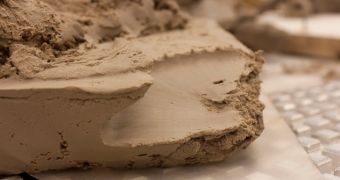Rubbing dirt in wounds is not as bad as it sounds. In fact, it might actually help keep pathogens such as E. coli and hard-to-kill MRSA at bay, a study published in the journal PLOS ONE says.
There is only one catch: one has to be sure that the dirt they're applying on their wounds is a special type of antibacterial clay.
The clays now said to nurse wounds and kill several pathogens are rich in compounds such as iron, copper, cobalt, nickel and zinc metal ions, Geekapolis says.
By the looks of it, it is these compounds that we have to thank for the clays' beneficial effect.
As researcher Shelley Haydell put it, “We have demonstrated that mineralogically-identical clays exhibit chemical variability which correlates with variability in antibacterial activity.”
“Since clays can contain toxic metals, such as arsenic, cadmium, lead, and mercury, safety precautions must be in place to minimize exposure to toxic ions. Efforts must be taken to standardize the composition and antibacterial efficacy of clays if they are to be used therapeutically and prophylactically,” the specialist warned.

 14 DAY TRIAL //
14 DAY TRIAL //